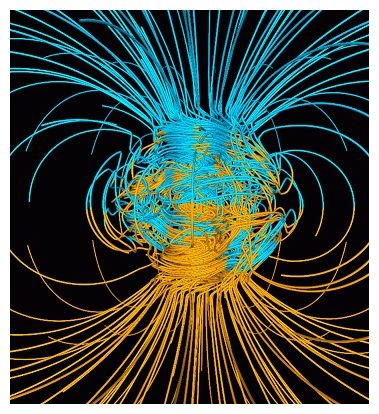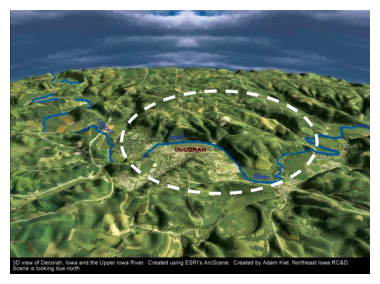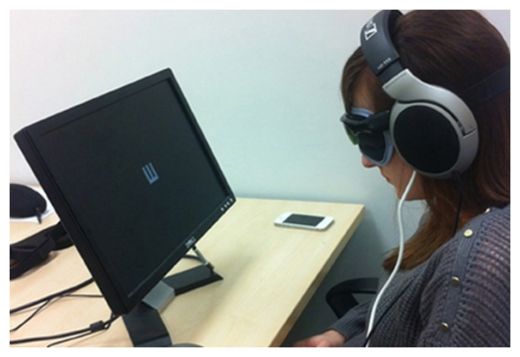
© NASASupercomputer model of Earth's magnetic field.
Periodic wobbles in Earth's core change the length of a day every 5.9 years, according to a study published today (July 10) in the journal
Nature.
Teasing out this subtle cycle, which subtracts and adds mere milliseconds to each day, also revealed a match between abrupt changes in the length of day and
Earth's magnetic field. During these short-lived lurches in the magnetic field intensity, events called geomagnetic jerks, Earth's day also shifts by 0.1 millisecond, the researchers report. Since 1969, scientists have detected 10 geomagnetic jerks lasting less than a year.
Seemingly negligible, these fleeting variations are mighty to those who study the planet and its core. All of a sudden, a planet changes its spin like a figure skater open or closing her arms. The rotational effect helps scientists understand what's happening inside the
Earth's core. Shifts in the magnetic field also provide clues to the inaccessible iron core. But their source remains a mystery.
Lead study author Richard Holme suspects a shimmy in the solid inner core that drives the 5.9-year cycle, transferring angular momentum to the outer core. But no one knows what causes geomagnetic jerks.
"I have no clue," said Holme, lead study author and a geophysicist at the University of Liverpool in the U.K. "Something is happening at the core-mantle boundary, because you're seeing the geomagnetic and the rotational effect at the same time, but we don't know what's going on," Holme told LiveScience's OurAmazingPlanet.




